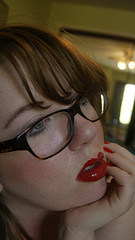 A person who is nearsighted could see close objects clearly but things that are at a distance will appear blurry. Usually, these objects will include a blackboard, road sign or even a face across the room. This condition is common and affects 1 in every 4 adults around the world. Nearsighted symptoms may include frequent eye squinting, blurred vision at a distance, headaches or eye strain from an attempt to focus.
A person who is nearsighted could see close objects clearly but things that are at a distance will appear blurry. Usually, these objects will include a blackboard, road sign or even a face across the room. This condition is common and affects 1 in every 4 adults around the world. Nearsighted symptoms may include frequent eye squinting, blurred vision at a distance, headaches or eye strain from an attempt to focus.
Other nearsighted symptoms include recurring headaches, fatigue when driving or p laying sports or from staring more than a few feet away. It is important to determine the early signs of nearsightedness so it can be corrected right away. Nearsightedness could be cured by wearing eyeglasses, contact lenses or performs a refractive surgery.
The first sign that an individual is nearsighted normally happens in childhood between eight to twelve years old. Usually, the teacher will notice that a student is having hard time seeing the blackboard. The student could be noticed squinting since squinting could help the eyes to focus on objects at a distance. Nearsighted people may need to change their glasses as they grow older because the shape of the eyeball also changes as they age. When a person is in his or her twenties, the condition normally stabilizes and does not get worse.